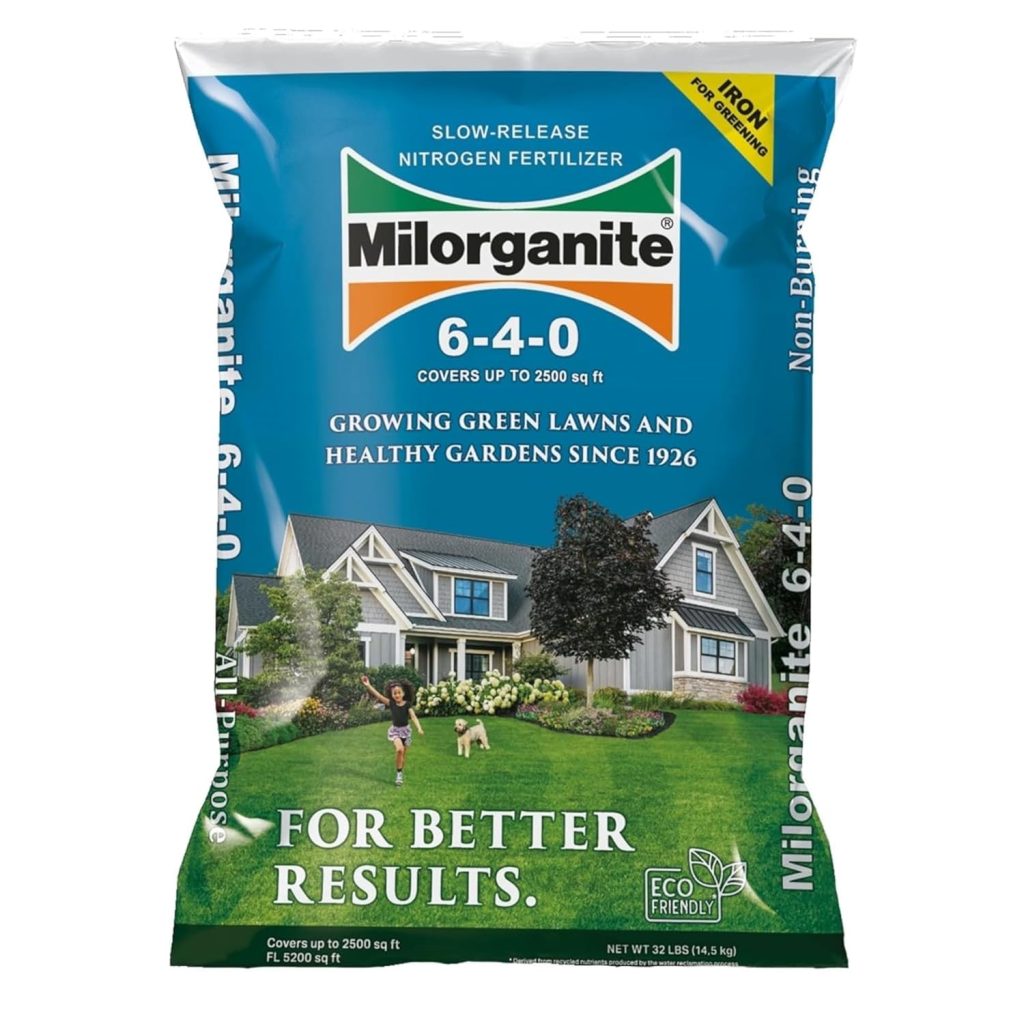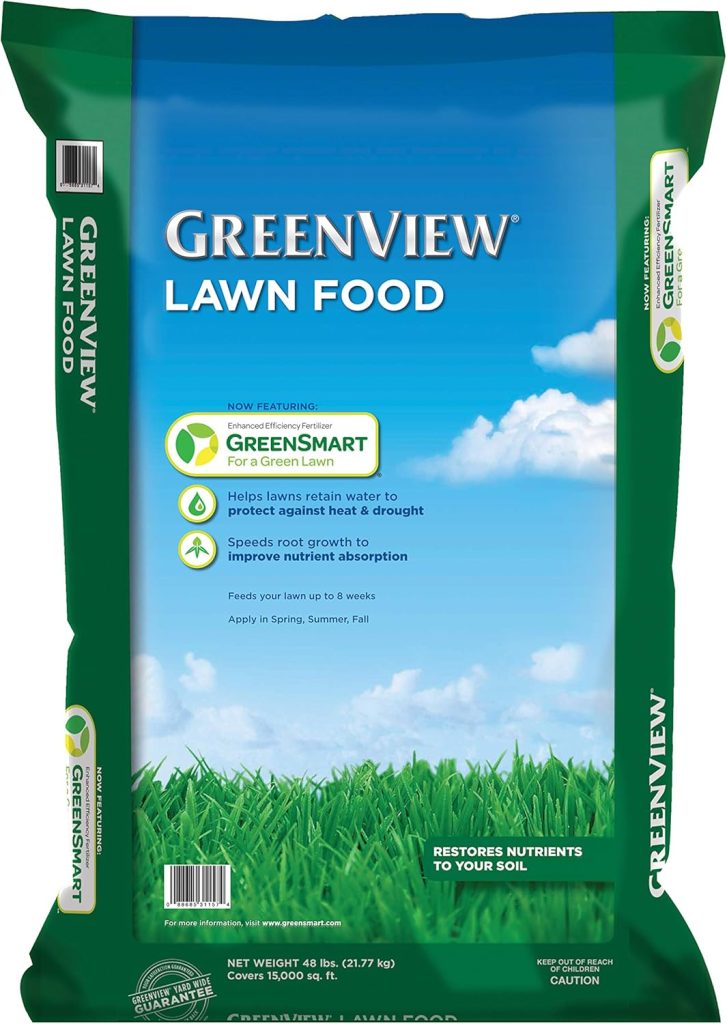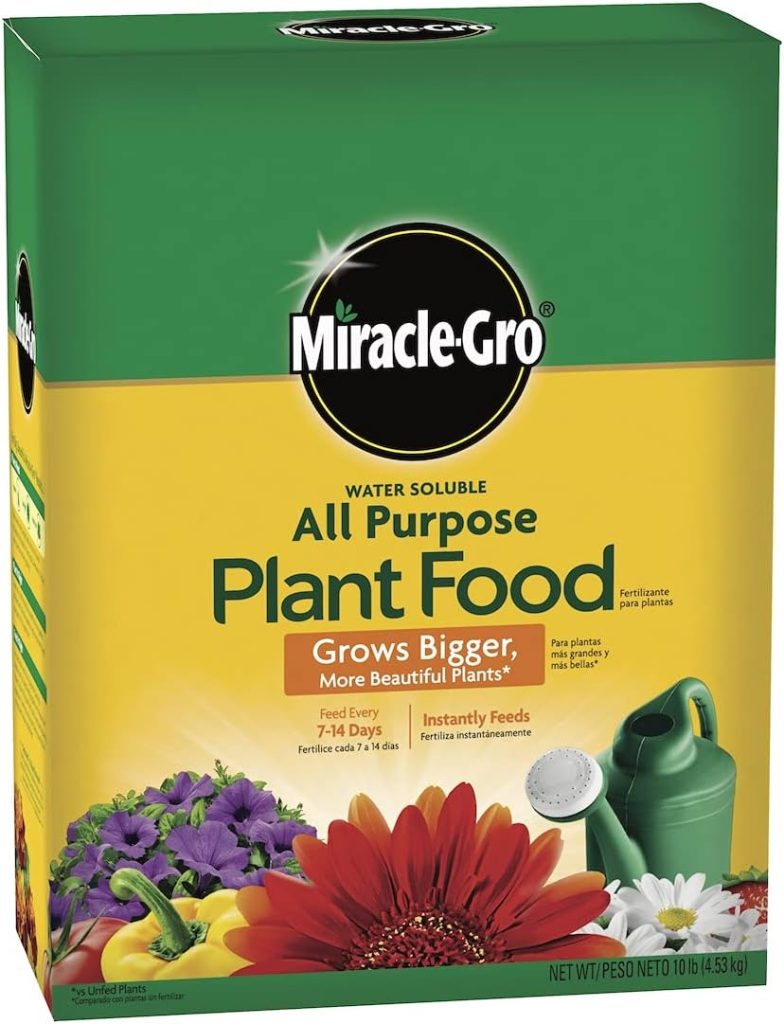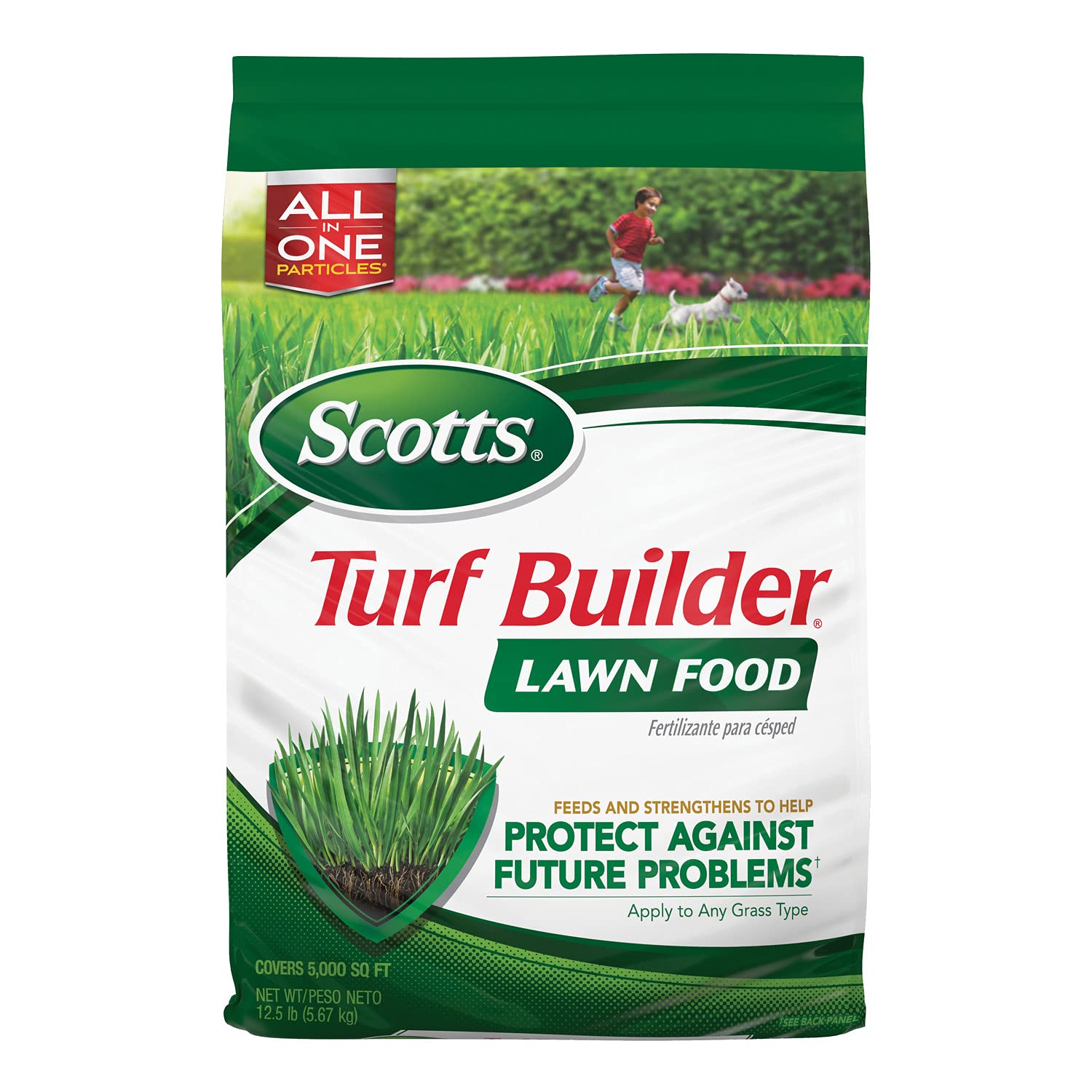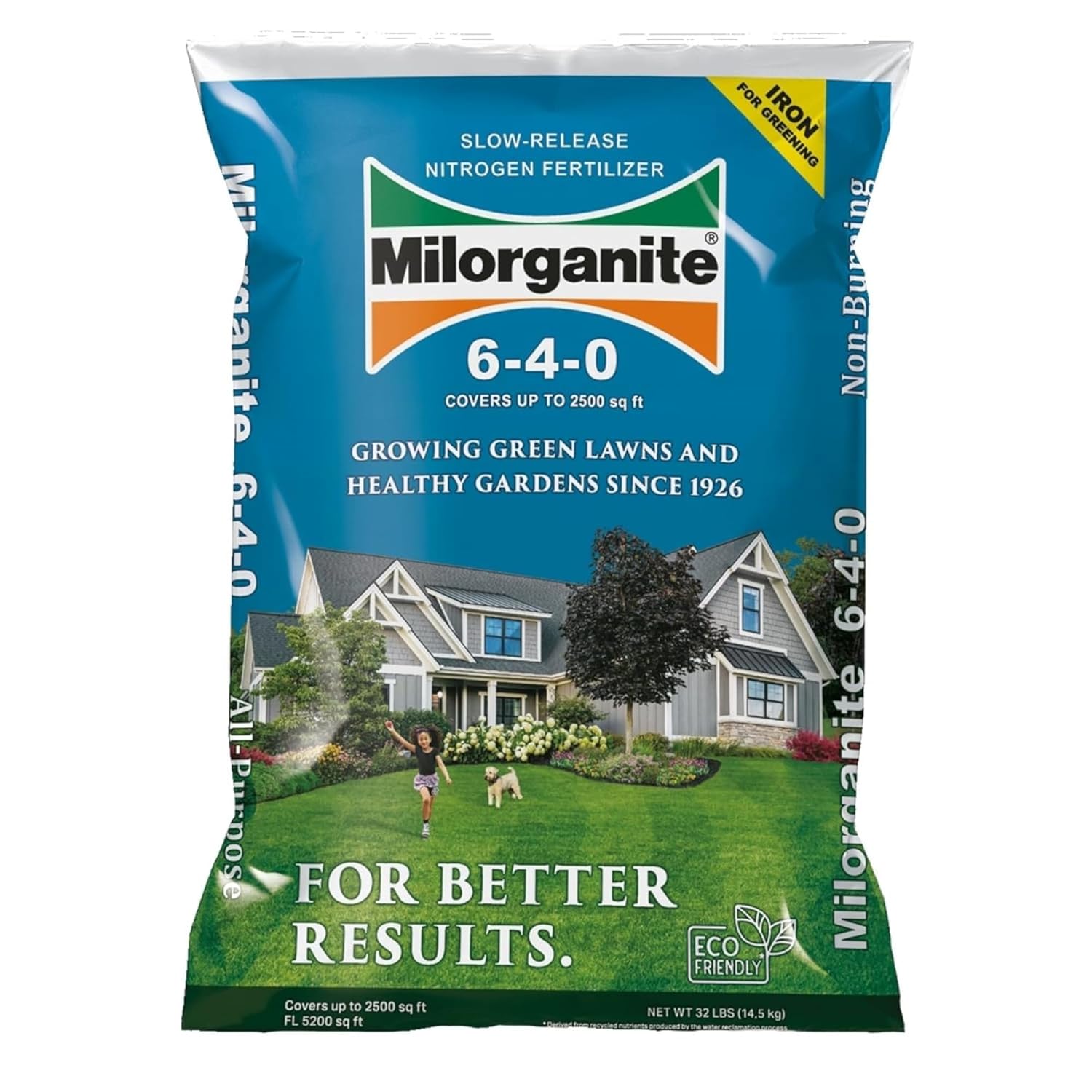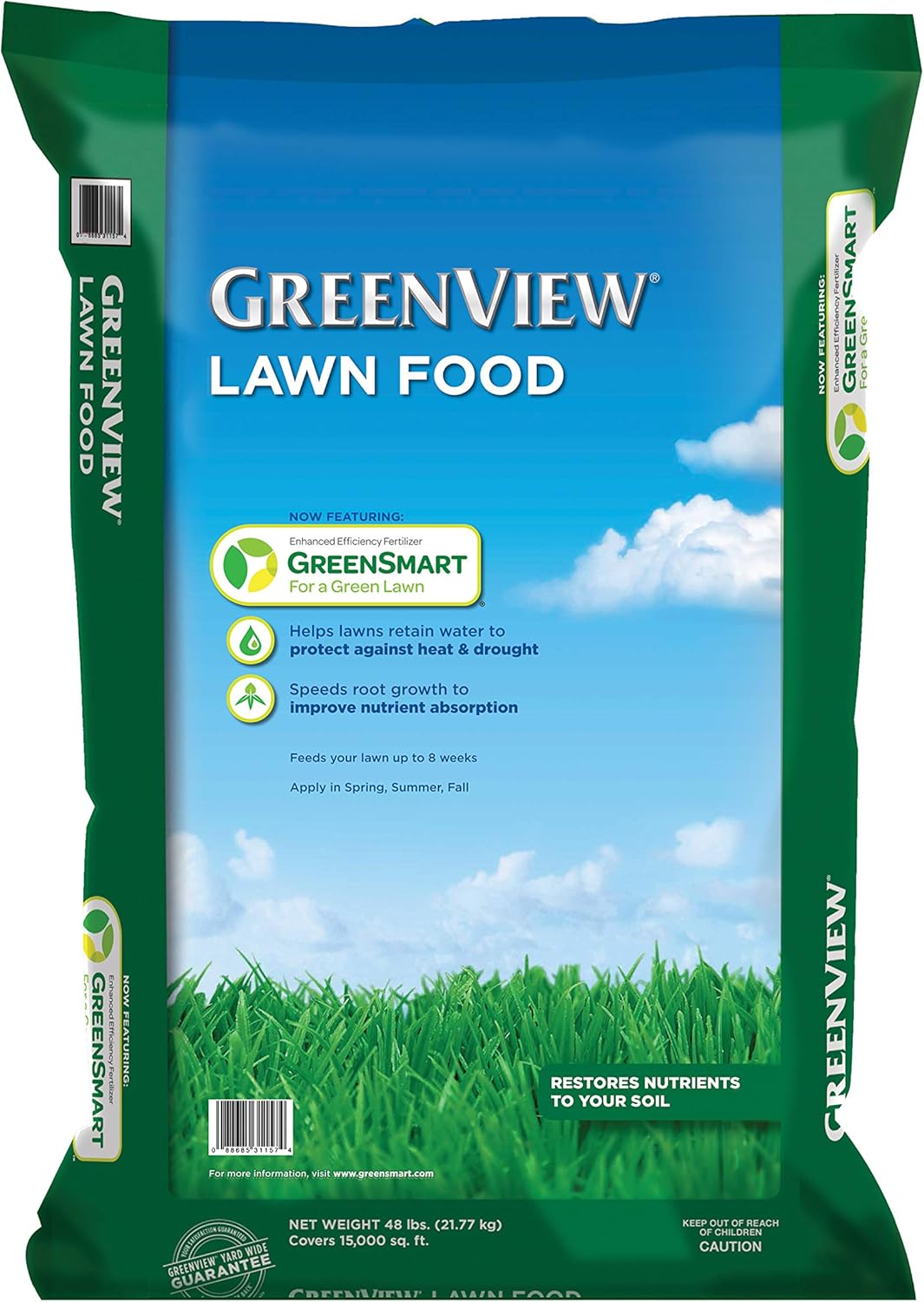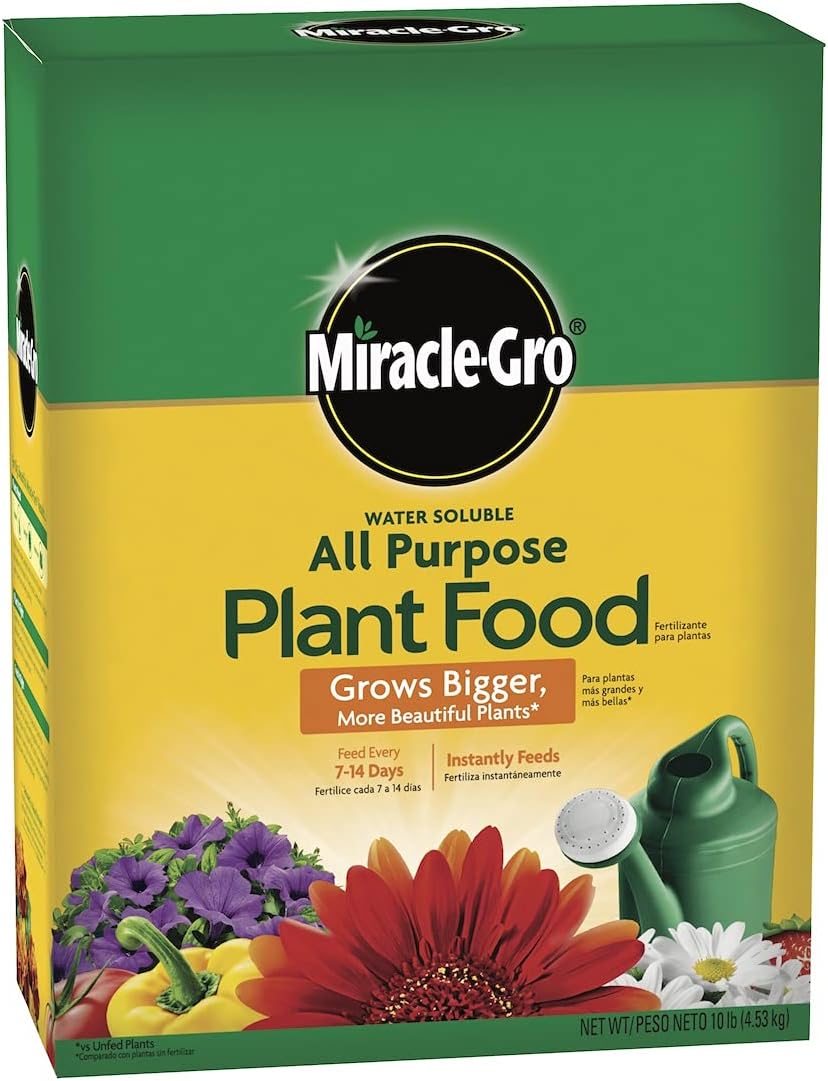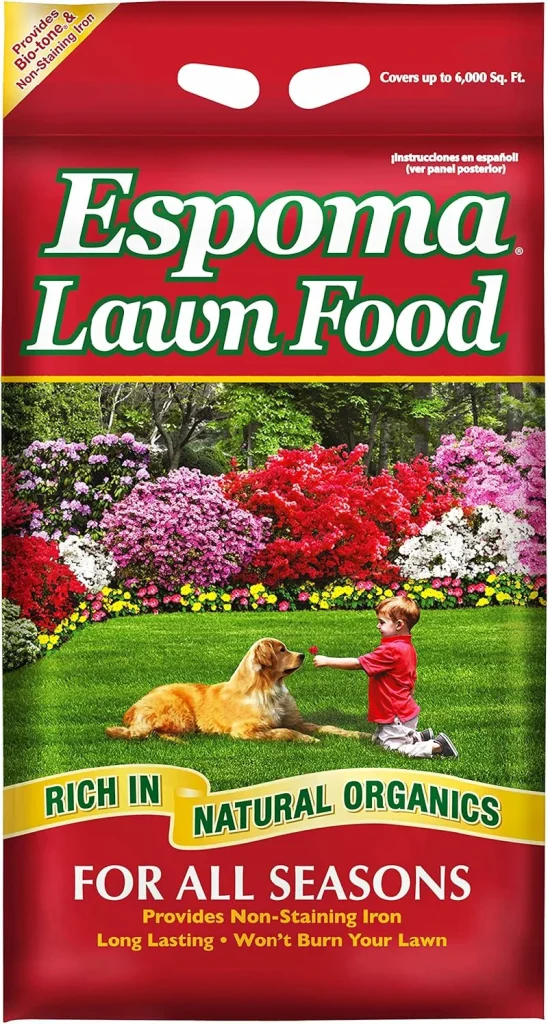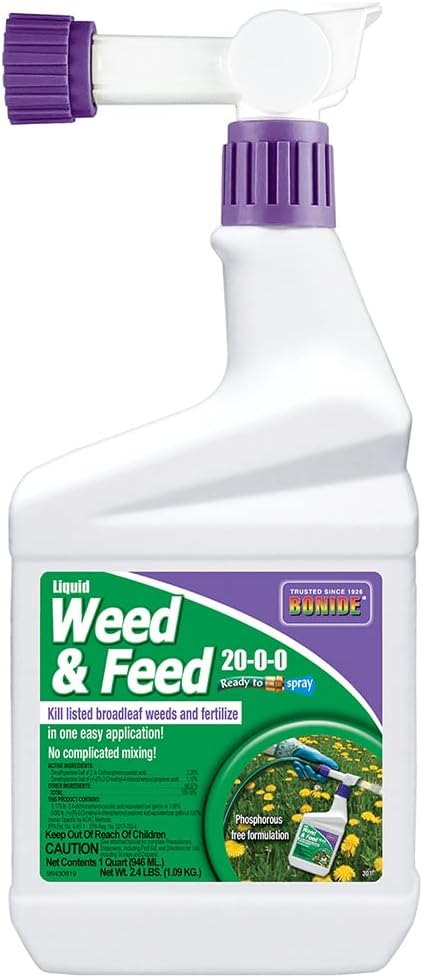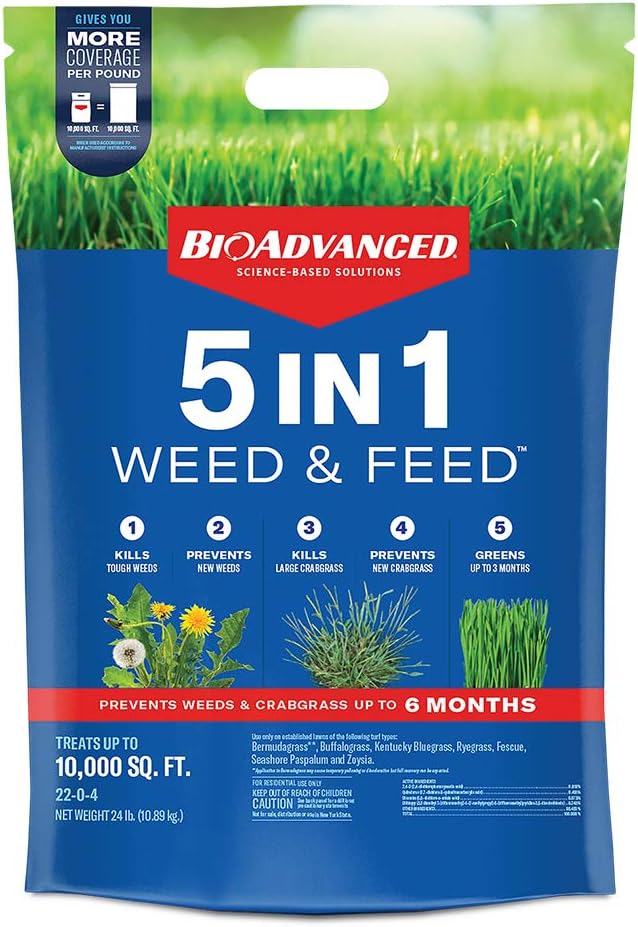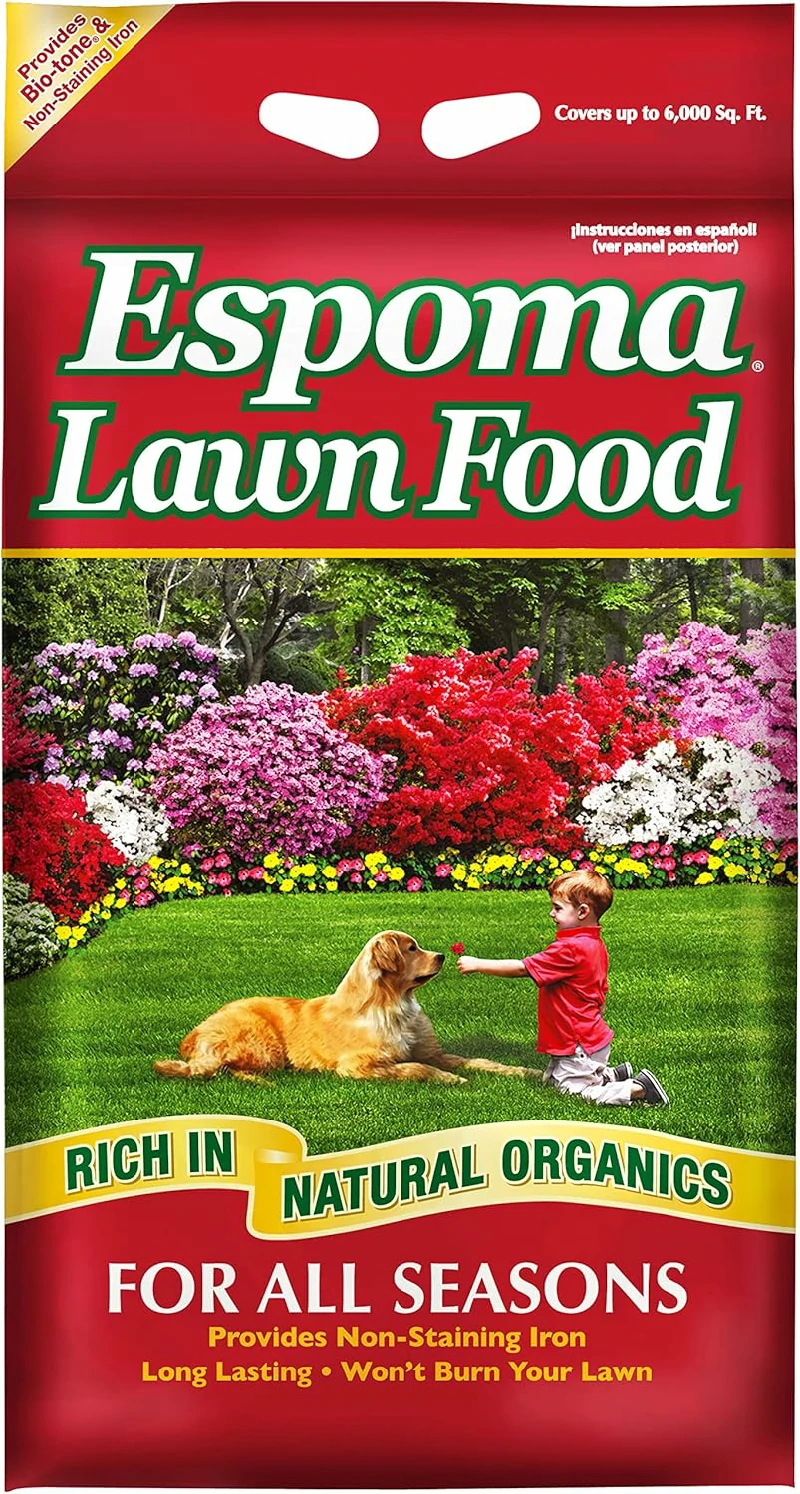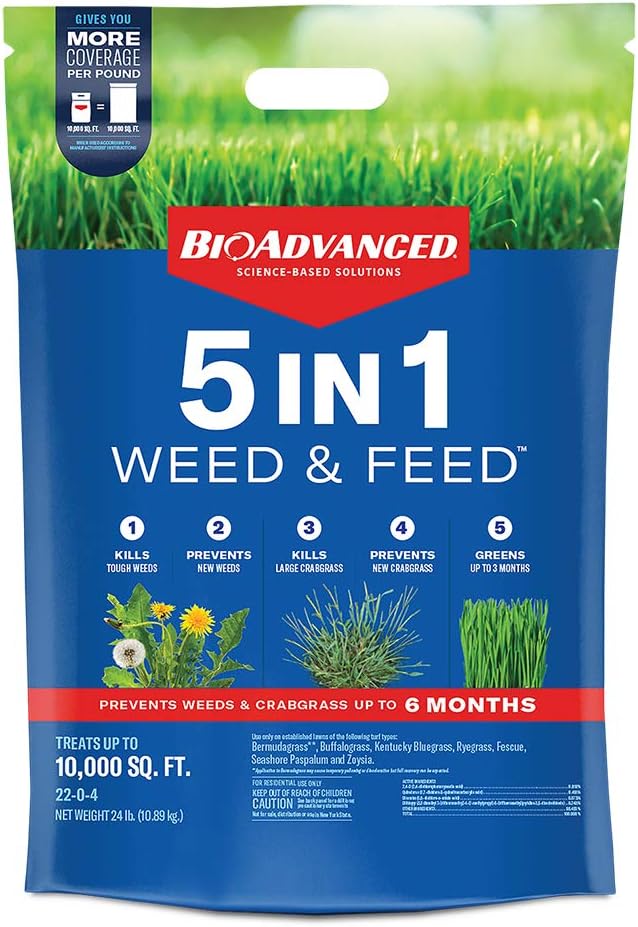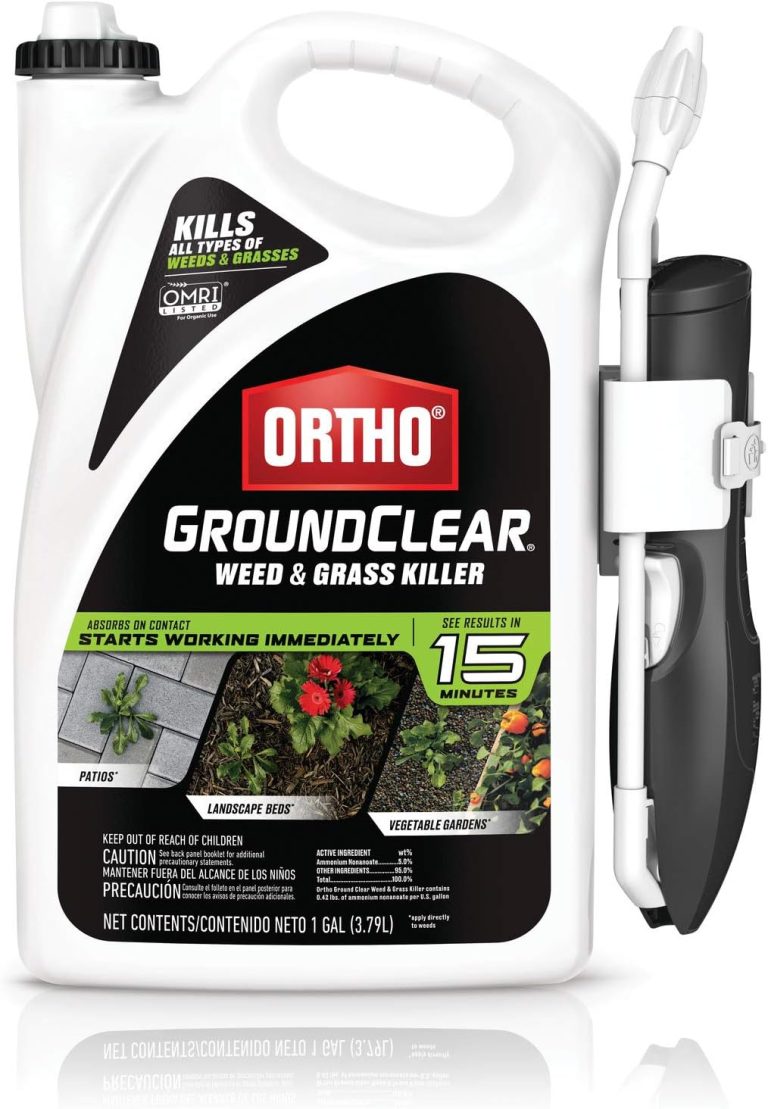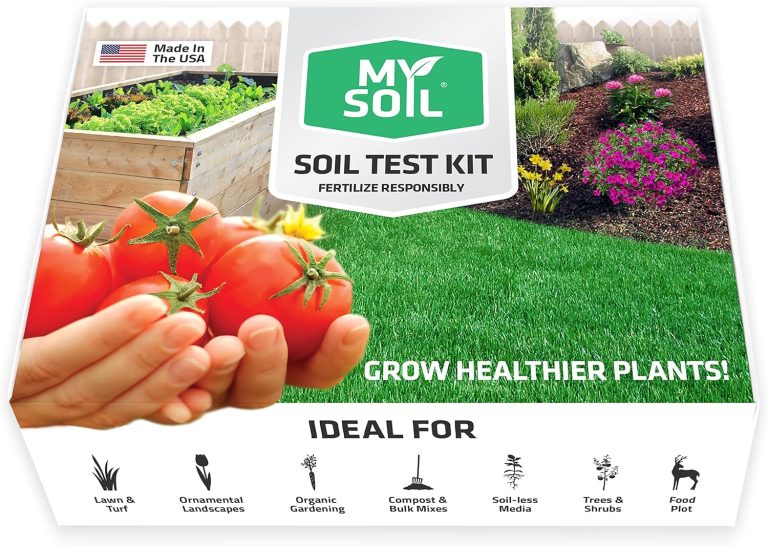7 Best Lawn Fertilizers of 2024
Lawn fertilizers play a vital role in maintaining a green and lush lawn. These fertilizers provide essential nutrients that improves grass health, flexibility or resilience and color, helping to keep lawns looking their best. There are three basic types of lawn fertilizers
- Synthetic (Chemical) Fertilizers which often can be found in granular and liquid form. They are formulated for their noticeable results within days
- Organic Fertilizers derived from natural sources like plants and animal by-products. They provide improved soil health over time by enhancing microbial activity.
Here we have listed down 7 best Lawn fertilizers in 2024 by analyzing their pros and cons so you can make an easy purchase decision and go for a fertilizer that suits your needs.
1. Scotts Turf Builder Lawn Food
It can be challenging for many homeowners to maintain a lush green lawn. For the health of your yard or lawn many factors play a crucial role like soil quality, weather conditions and type of grass. Scotts Turf Builder Lawn Food should be a popular choice for those looking to achieve a vibrant, healthy and lush green lawn. This fertilizer is in granule form design to nourish and promote the growth of grass.
The main ingredients (nutrients) of this fertilizer are 32% of Nitrogen (N), 4% of Soluble potash (Potassium carbonate K2CO3), 7% of Sulphur (S) and 2% of Iron (FE). This composition of nutrients helps in nourishing grass and promote the growth of a thicker lawn that can better withstand wear and tear, infestations and diseases. This composition also helps to enhance chlorophyll production which contributes to the grass’s color and overall aesthetic appeal. The All-In-One formula allows to work for the growth of any kind of grass including Bahiagrass, Bermuda, Centipede, Fescue, Kentucky Bluegrass, Ryegrass, Zoysia etc.
Talking about the time of application, the best times are during the spring and fall. It can be applied to wet or dry lawn both, but if the temperatures are consistently exceeding 90⁰F, water immediately after application to reduce stress on your lawn.
Pros
Cons
2. Milorganite Organic Nitrogen Fertilizer
This is a highly regarded option for lawn care enthusiasts and professional landscapers alike, known for its unique formulation and numerous benefits. Milorganite has been recycling since 1926 to make nutrient-rich byproduct that is transformed in to highly effective fertilizer. Originating from treated sewage sludge, Milorganite is an organic fertilizer that provides a sustainable alternative to synthetic products.
One of its standout features is its slow-release nitrogen, which constitutes 6% of its composition. Milorganite’s slow-release plant feeding mix delivers nitrogen and other nutrients for up to 8-10 weeks after application and does not require watering, also helps reducing the risk of lawn burn that can often occur with quick-release products. Milorganite will not burn your lawn or plants. It contains virtually no salts.
Typically, the recommended application rate is 32 pounds per 2,500 square feet, though users should always refer to specific guidelines on the packaging for best results. Milorganite’s iron greens remain stain-free. Milorganite offers organically complex iron throughout the feeding period and, unlike iron salts found in some synthetic fertilizers, does not discolor concrete. One aspect that some may find less appealing is the earthy smell that accompanies Milorganite. However, this odor dissipates once the product is applied and dried. Additionally, it is safe for use around pets and children once applied and dried, providing peace of mind for families who are concerned about chemical exposure.
Pros
Cons
3. GreenView Fall Lawn Food
Greenview Fall Lawn Food is a specialized fertilizer designed to provide nutrients that are tailored to the needs of lawn during the fall season. It typically contains 22% of Nitrogen (N) of which it has a slow-release formula enhancing efficiency feature that promotes quick spring green-up, 0% or No-phosphate (P) and 4% of Potassium (K). Thus, having a N-P-K ratio of 22-0-4.
Greenview Fall Lawn Food should be applied in the fall when the lawn is actively growing, typically when temperatures are between 50-85°F. This is usually in late September through early December, depending on the region. It can be applied for the growth of many types of grasses like Bahia, Bermuda, Bluegrass, Centipede etc. It feeds your lawn for up to 8 weeks.
Before application few things are needed to be done.
Mow your lawn at least one time ensuring the grass is cut to a moderate height and the fertilizer reaches the soil without obstruction.
Apply evenly by using a broadcast spreader for even distribution of the fertilizer across the lawn. Be careful to avoid applying too much fertilizer in one spot, as this can result in lawn burn.
Water the lawn To help the nutrients penetrate the soil or apply the fertilizer just before the rain is expected. This will activate the slow-release formula and allow the fertilizer to start working.
Avoid over-fertilizing by following the recommended application rates to prevent over fertilization, which could damage the lawn.
Pros
Cons
4. Miracle-Gro All-Purpose Plant Food
Miracle-Gro all-purpose plant food is a non-organic soluble in water fertilizer. The formula for this fertilizer is formulated for the quick delivery of essential nutrients to plants. The product comes in different forms, including Powder, Granules, Liquid concentrate and Spikes.
It has an N-P-K ratio of 24-8-16, which means it contains 24% of nitrogen for the production of healthy leaf and stem growth. It helps plants in the production of proteins and chlorophyll, both necessary for photosynthesis and overall plant health, 8% phosphorus which is an essential component of plant cells and is required for division of cells and the development of the growing tips of plants and 16% potassium which supports strong and healthy plants by increasing disease resistance, tolerance for drought and overall plant vitality.
How to Use Miracle-Gro All Purpose Plant Food
1. Liquid Fertilizer Application
If you are using the water-soluble form (powder), follow these steps: Mixing 1 tablespoon of Miracle-Gro All Purpose Plant Food with 1 gallon of water (for most plants). Pour the mixture around the base of the plant, ensuring the solution reaches the root zone. You can also use a watering can or a hose-end sprayer for large areas. For best results, apply the fertilizer every 7-14 days during the growing season.
2. Granular Fertilizer Application
Sprinkle the granules evenly around the base of the plant, starting about 2-3 inches away from the stem (to avoid burning the plant). After applying the granules, water the area thoroughly. This will help the nutrients dissolve and start working their way into the soil.
3. Spikes
Place the spikes around the plant’s root zone, spacing them evenly and water the plant well after inserting the spikes. The nutrients will gradually be released as the soil absorbs moisture.
Pros
Cons
Image | Name | Details | Price |
| |||
| |||
| |||
|
5. Espoma Lawn Food
Espoma Lawn Food is an organic-based fertilizer that contains Bio-tone Microbes that help make nutrients more available to your lawn. Unlike synthetic fertilizers, Espoma products are made from natural, organic ingredients, which provide a more gradual and sustainable release of nutrients. It has an N-P-K ratio of 15-0-5 which provides effectively a balanced and 2.5 times slower the supply of nitrogen (15%) than other synthetic fertilizer for extended feeding. It also contains 5% of Soluble Potash, 2% of Sulfur and 1% of non-staining Iron.
It is a non-burning and easy to apply lawn food which is also safe to use around kids and pets. For effective use and for noticeable results it should be applied to a dry lawn that has recently been mowed. Water lightly after the application if rain is not expected within 24 Hrs.
Pros
Cons
6. Bonide Weed and Feed
As the name suggests, Bonide Weed and Feed provides both solutions for your lawn by working as a fertilizer which provides essential nutrients and by working as an herbicide which kills unwanted weeds, making it an effective all-in-one product for maintaining a healthy lawn.
The N-P-K ratio for this is 20-0-0 which means it contains 20% of nitrogen as the main ingredient, which help in the fertility process of grass and also contains 2,4-D and 2,4-DP which performs as an herbicide which helps in the control of different kinds of weed like black medic, clover, common chickweed, dandelion, dock, english daisy etc. The Bonide Weed and Feed is designed for use on bentgrass, bermudagrass, Kentucky bluegrass, fescues, perennial ryegrass, St. Augustinegrass lawns, vacant lots, playgrounds.
For noticeable results the best time of application for this is during spring or early fall. The lawn should be mowed up to a desired height (on new lawns the grass height should be 2 inches before the application) and dry to prevent uneven distribution of the solution.
The product arrives in a container with an attached hose-end sprayer and weighs 1 lbs. which is sufficient to cover an area of 2500 square feet of turfgrass. Simply connect a garden hose to the sprayer and begin application. No mixing required.
Pros
Cons
7. BioAdvanced 5-in-1 Weed and Feed
BioAdvanced 5-in-1 Weed and Feed is a multi-purpose lawn care product designed to fertilize your lawn while simultaneously addressing common lawn problems. The product combines five essential functions into one solution which are
- Kills tough weeds: Apply to actively growing dandelions, clovers and black medic
- Prevent new weed growth: Create an external 6 months control barrier that prevents new weeds from emerging.
- Kills large Crabgrass: Including hairy, smooth and other types of Crabgrass
- Prevents new Crabgrass growth: Prevents crabgrass from reemerging for up to 6 months by forming a barrier at the top layer of the soil.
- Fertilization: Fertilizer formula feeds your lawn for quick greening for up to 3 months, long-lasting feeding and stronger turf.
The N-P-K ratio of BioAdvanced 5-in-1 Weed and Feed is 22-0-4. This formula is recommended for established lawns of the following turf types like Fescue, Bermudagrass, Buffalograss, Kentucky Bluegrass, Ryegrass, Seashore Paspalum and Zoysia. Environmental conditions play a very crucial role in the growth of grass and weed control. The best time for application is spring, early summer and fall. Temperature should be between 50-90⁰F during application. It has an
Pros
Cons
Image | Product | Details | Price |
| |||
| |||
|
Considerations before purchasing a lawn fertilizer
1. Consider the grass type
The grass type growing in your lawn is an essential factor when choosing which fertilizer to use. There are primarily two types of grasses.
Cool Season Grasses:
This type of grass, which includes species like Kentucky bluegrass, fescue, ryegrass, and bentgrass, thrives in milder climates across the nation. These grasses remain green throughout the year and are best treated when the weather cools, as at the end of summer.
Warm-Season Grasses:
Warm-season grasses, such as buffalo grass, zoysia, Bermuda grass, and St. Augustine, are generally found in warmer climes. These grasses all grow best during the summer season and go dormant in the winter. The best time to fertilize these is when the weather gets warmer.
2. Determining the requirement of nutrients for the lawn
You must test the soil to find out what your lawn needs. In order to solve these concerns for a healthy lawn, you can use a soil test kit to examine the soil’s pH levels, microorganisms, amount of acidity, and missing nutrients.
3. Understanding the N-P-K ratio
One important aspect of selecting a lawn fertilizer is to understand the N-P-K ratio. A fertilizer’s effectiveness—or lack thereof—is determined by these figures. The back of each fertilizer that is for sale will display the ratio that is contained within it. The percentages of nitrogen, phosphate, and potassium are displayed. For example, a bag labeled 15-5-10 indicates that it contains 15% nitrogen, 5% phosphate, and 10% potassium.
4. Choosing the right ratio
It depends upon the growth stage of the lawn whether the lawn is
New Lawn:
Potassium and phosphorus are even more crucial for a new lawn. Because the roots aren’t yet prepared to support a lot of top growth, go easy on the nitrogen. Therefore, pick a fertilizer that is heavy in potassium and phosphate and low in nitrogen. It’s crucial for fresh turf, but it’s typically more costly.
Healthy Lawn:
Select fertilizers high in nitrogen and low in phosphate and potassium for a well-established and healthy lawn. The least expensive ingredient is nitrogen, and a well-established, healthy lawn requires less phosphorus and potassium.
Stressed Lawn:
An increase in potassium can assist minimize stress and give your grass the strength it needs to withstand harsh situations. Select fertilizers that are low in phosphorus and high in potassium and nitrogen.
5. Choose the type and form best to fit your lawn
The time has come to select from the several kinds of fertilizer. The optimal solution for you will depend on your objectives. These possibilities include liquid and granular, slow-release and quick-release.
Think about the outcomes you require when weighing your selections. Are you looking for a greener lawn quickly because it’s late in the season? For you, a quick-release formula works best. However, if you go ahead and apply your fertilizer in the spring, a slow-release, granular formula will help ensure the longevity of your lawn.
6. Plan for future applications of your rightly chosen fertilizer
It’s important to understand that fertilization is a multi-step process. Your lawn will undoubtedly require applications repeatedly, therefore it’s crucial to schedule and plan them throughout the year for maintaining and keeping your lawn healthy throughout the seasons.

